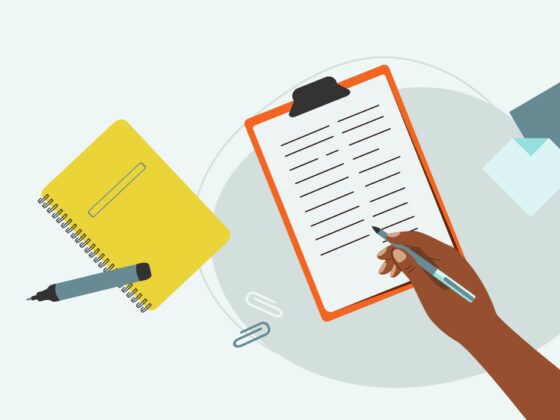This deposition preparation checklist is an essential tool for attorneys to tackle depositions with minimal roadblocks and guide their witnesses to successful testimony.
After the review and production phases of discovery are complete, a lot of people must collaboratively work with produced evidence to prepare a strong case. Keeping them coordinated is often a challenge, particularly when you’re working with expert witnesses and counsel outside of your own firm.
As a legal professional, you have probably been involved in dozens, if not hundreds, of depositions. But are your organizational methods and deposition preparation skills up to par?
Preparation is the key to handling depositions with aplomb. Following is a simple deposition preparation checklist that lays out key considerations to keep in mind during the deposition process.
Scheduling Considerations
1. Schedule the Deposition Early
Send a letter to opposing counsel just after serving or receiving your first round of written discovery. In the letter, propose several deposition dates and locations and include names of witnesses and/or experts you would like to depose. Think about proposing a neutral location for the deposition.
2. Choose a Court Reporting Service and Deposition Method
Once you set a date, time and place for your deposition, it’s essential to choose and contract an appropriate court reporting service for your particular needs. (Will this be a remote or virtual deposition? A real-time reporting depo? A video conference or mobile depo?)
3. Determine If an Interpreter is Needed
Work with opposing counsel to determine if any witnesses are hearing impaired or primarily speak a language other than English. If so, an interpreter is most likely necessary to ensure that the witness, attorneys and court reporter can communicate in the most effective way possible.
Preliminary Preparation
1. Make Copies of the Civil Rule
The Civil Rules relating to deposition discovery have provisions governing conduct and objections that are permissible during a deposition. With some defense counsel, it may be a good idea to mark a copy of the rule as an exhibit and remind counsel of its provisions.
2. Copy Any Subpoena
It’s a good idea to mark the subpoena as an exhibit whenever there are meaningful provisions, such as required items for the witness to bring to the deposition.
3. Copy Interrogatory Disclosure
If there is an interrogatory description of what the witness will testify to, mark it as an exhibit to limit the areas of testimony.
Lawyer Preparation
1. Identify Key Issues in the Case
Don’t go to the deposition without first clearly identifying the key issues in the case. In most cases, your deposition preparation checklist should focus primarily on those issues.
2. Determine Objectives for Each Issue
Once you know the key issues, decide what your goal is for them. Potential goals might be to question the witness’s knowledge or credibility, to lessen the impact of the issue, or to simply learn more from the witness regarding that issue.
3. Build Deposition Outline and Divide Into Individual Chapters
Each category or issue should be a separate part of your deposition preparation checklist for organizational reasons. Refer to this outline to keep yourself on track throughout the deposition, and make sure you cover all of your intended questions with the witness.
4. Copy Documents That Support Each Chapter
Organize documents by the order in which you intend to use them. Some potentially relevant documents to consider are:
- Statements, reports or depos of witness
- Reports & investigations
- Other witness statements
- Standards that apply
- Literature that applies
- Photos: video, and newspaper clippings
- Diagrams, illustrations and exhibits
- Interrogatory, admissions and discovery
5. Research the Witness
Google might be your best resource for most witnesses. Use it to research the witness name, location and/or business, and you may turn up a bevy of background information. Learn some basic search operators that can help you pinpoint information more precisely.
Social media profiles (Twitter, Facebook, etc.) are also a potentially vital source of data. Finally, check with other lawyers for possible information about the witness.
Witness Preparation
The Four Simple Rules
What should you tell your client to prepare him/her for a deposition? Beyond telling the truth, there are only four simple rules for giving a good deposition. They are easy to explain to any client, and – even better – they are easy for any client to understand and follow, though it may take some practice.
Rule 1. Listen to the question.
Rule 2. Be sure you understand the question
Rule 3. Think about the answer.
Rule 4. Express the answer in the shortest and clearest manner possible.
Walk through these rules with your client and provide some practice questions to help them feel more comfortable.
Prepare for Video Depositions
It might be easy to take the production of a video deposition for granted, but a good deposition preparation checklist is incomplete without tips on this vital aspect of depositions. While in-trial video deposition disasters are rare, bad and uninspiring presentations are depressingly common.
It doesn’t have to be that way. If done right, trial deposition videos can be a true competitive advantage for your side.
There are two common scenarios for presenting deposition video in court. The first is simply the presentation of non-live witness testimony – piecing together video segments for a testimony “compilation” presented to a jury or judge. The second is to impeach a witness on cross examination. If done correctly, it can be devastating to a witness’s credibility.
Both types of video can have a massive impact on a trial, and a little preparation can go a long way in shaping that impact to your advantage. Following are six quick tips for producing great deposition videos.
1. Control the Environment
Eliminate any loud or distracting background noise. For example, the mere presence of cell phones can cause buzzing in the audio stream. And hard drive fans in computers or HVAC noises can loom large in a lengthy video deposition. Discuss this with the videographer before recording.
Be sure to mic both the attorney and the witness properly, so their audio levels are even. A jury who can’t hear a deponent clearly will tune out and quickly lose interest in their testimony.
2. Control the Appearance
The most famous trial deposition video of all time is arguably Bill Gates’ disastrous appearance in Microsoft’s antitrust trial. In addition to his evasive and arrogant answers, most people were distracted by his unruly hair and sloppy brown suit.
Deponents don’t need to be fashionistas or bring a stylist, but they should be aware of how things look on camera. Think about how seasoned television pros dress. Details and intricate patterns prove to be little trouble for our eyes. However, pinstripes, checks, herringbones, and textured fabrics will cause visual problems for the camera.
Also, keep the background clear. Anything other than the witness on the screen (e.g. a 64 oz drink cup) will be noticed and could be a distraction for the jury.
3. Watch Your Posture
This may bring back unpleasant flashbacks to elementary school for some, but posture matters. Deponents should lean slightly forward – it presents a positive, comfortable look. Leaning back can make one appear cocky or too carefree.
4. Put Your Best Face Forward
Have your witness take a second at the beginning of the video recording – before questions start – to look straight into the camera with both a neutral face and then a smile. This snapshot can later be used in an opening or closing statement with excerpts of their testimony to present your witness in a more favorable light.
5. Control Nervous Tics
This is probably the hardest to stop, but nervous tics can become readily apparent given the length of a deposition. Work with your witness to be aware of any they may have, and focus on controlling them.
6. Prepare for the Q&A
It’s important to give your witness (and yourself) a few pointers on the question and answer process to ensure their testimony comes across clearly and has maximum impact in court.
- Do not talk over the witness or opposing counsel. The court reporter will attempt to clean up the audio overlap, but it can make a clip of the testimony unusable.
- Instruct your witness to wait for any potential objections to begin their verbal response.
- After a lengthy objection and colloquy, make sure to have the question read back or repeat the question yourself. A good video clip needs a clean question and answer.
★ Take Your Deposition Skills to the Next Level
Click here to download our free eGuide on deposition strategies.
Get Fully Equipped for Your Next Deposition
Click the button below to download the full PDF of our deposition preparation checklist, and be ready to handle any curveball the opposing counsel throws your way.







